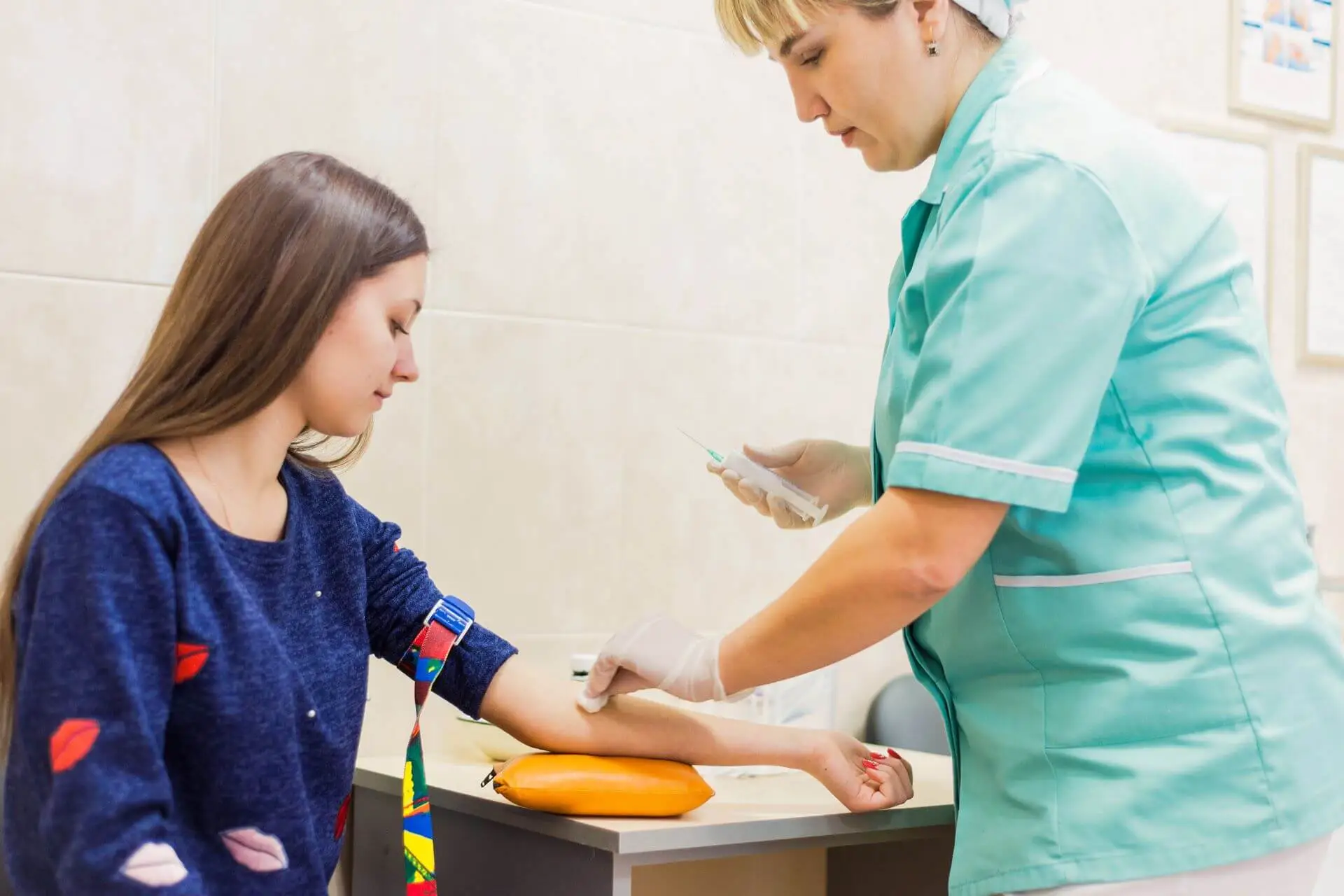A lot of medical assistants consider getting training to become phlebotomy technicians. The question they most often ask is, “Can you be a phlebotomist with a medical assistant certificate?” The answer is yes—it’s a move that will give you a significant advantage over other applicants pursuing a career in the healthcare industry.
Clinical medical assistants (CMAs) are trained in the basics of blood draws, but they have limitations. Phlebotomy tech training and certification will make you a more competitive candidate for positions at clinics and labs, and a more independent worker.
What is a phlebotomy technician?
Phlebotomy technicians specialize in drawing blood from patients and preparing the samples for diagnostic testing, blood transfusions, and donations.
Phlebotomy techs may also monitor a patient’s vital signs during a draw and perform some administrative tasks. Blood draws, though, make up the majority of their work.
Medical assistants draw blood. But phlebotomy techs do it more often.
Blood draws are part of the job for most CMAs, too. But in many states, a medical assistant needs a doctor’s supervision to draw blood. That’s not the case here in Texas: CMAs can perform blood draws without restrictions. Still, they tend to draw blood less than phlebotomy techs.
Phlebotomists work more in diagnostic labs.
Because they perform blood draws at a high volume, phlebotomists often work more independently than CMAs, in settings like blood collection labs and outpatient testing centers.
Blood draws are increasing in clinical settings.
According to the National Blood Collection and Utilization Survey (NBCUS), there was a nearly 2% rise in collected Red Blood Cell (RBC) units between 2019 and 2021. In 2021, 11.78 million RBC units were collected. Americans are getting more blood drawn than ever before, with more patients being tested in specialized healthcare clinics.
An increase in blood means healthcare providers need people who have the skills of a medical assistant and a phlebotomist.
Hospitals, clinics, and labs want colleagues who can perform blood draws quickly and error-free. It’s a good idea to become a phlebotomist with a medical assistant certification because you can quickly and efficiently draw blood, and that makes you highly valuable in the job market.
You’ll also qualify for more roles and better pay.
The additional certification for phlebotomists not only makes you better at your job; it qualifies you for new ones.
Even here in Texas, where CMAs are allowed to draw blood, employers prefer to hire medical assistants who hold a certification from nationally recognized organizations.
When you add phlebotomy skills to your CMA credential, you’ll be able to perform roles that require both patient care and bloodwork. You’ll also likely see a bump in your pay: Job opportunities for phlebotomists are expected to grow by 17%.
You need real-world experience to become a phlebotomist.
NTX’s program offers just that. Our program includes a skill laboratory, where students practice venipuncture and capillary sticks on each other.
To complete the program and qualify for the national certification exam through the National Healthcareer Association, you’ll need:
- 30 successful venipunctures
- 10 successful capillary sticks
That’s a level of training that goes beyond what’s covered in most CMA courses.
Can you be a phlebotomist with a medical assistant certificate?
Yes. If you’ve already completed medical assistant training, enroll in our phlebotomy training program. Training and certification in phlebotomy help you stay competitive in a growing job market and give you more flexibility to work where you want.
Become a phlebotomist at NTX Training Institute.
We offer a seven-week program that will give you the practical skills and knowledge you need to build your career. Enroll today.


